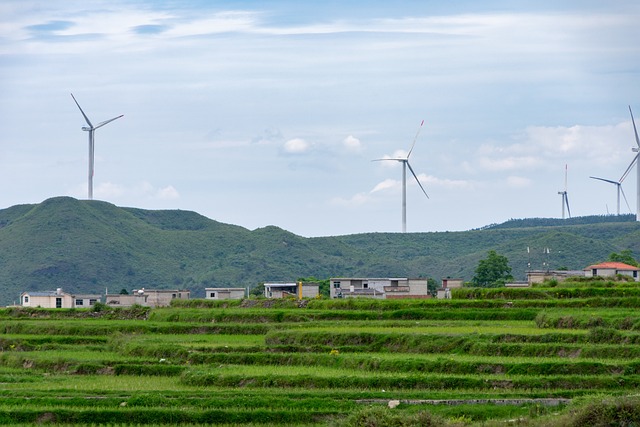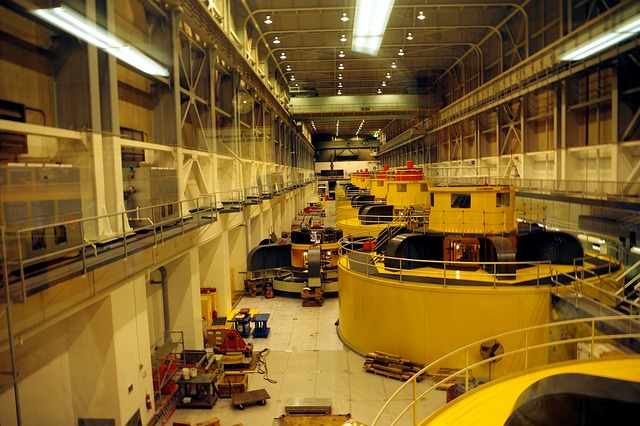Harnessing Tomorrow: The Rise of Sustainable Energy Investing
In the face of pressing global challenges such as climate change, increasing energy demand, and resource depletion, the shift towards sustainable energy investing has emerged as not just a trend but a necessity. As societies worldwide grapple with the impacts of fossil fuel dependency, the allure of renewable energy sources has gained unprecedented momentum, backed by advances in technology, policy changes, and a growing consciousness about environmental sustainability. This article delves into the rise of sustainable energy investing, exploring its implications, benefits, and future directions.
The Increasing Need for Sustainable Energy
The world is at a critical juncture where traditional energy systems are being questioned due to their environmental impacts. Global warming, driven predominantly by greenhouse gas emissions, has resulted in severe weather events, rising sea levels, and biodiversity loss. Consequently, there is a heightened awareness about the need for a transition to energy sources that are not only renewable but also sustainable.
According to the International Energy Agency (IEA), global energy demand is expected to increase by a significant margin in the coming decades. However, satisfying this demand through fossil fuels further exacerbates environmental degradation, hence the necessity for viable alternatives. Renewable energy sources like solar, wind, hydro, and geothermal provide feasible solutions that can greatly reduce carbon footprints while meeting energy needs.
Shifting Mindsets: From Philanthropy to Profit
Historically, clean energy initiatives were often viewed through the lens of philanthropy or environmental benevolence. Investors and stakeholders participated out of a sense of responsibility rather than economic rationale. However, this perception has shifted dramatically in recent years. Sustainable energy investing has transformed into a lucrative market, and investors increasingly see the potential for substantial returns.
Several factors contribute to this shift. First, technological advancements have made renewable energy more efficient and affordable. The cost of solar panels and wind turbines, for instance, has plummeted over the last decade, making these technologies competitive with fossil fuels even without government subsidies. This financial feasibility has attracted a wider range of investors, from institutional funds to private individuals.
Government Policies and International Agreements
Governmental policies play a pivotal role in shaping the landscape of sustainable energy investing. Numerous countries have implemented mandates, incentives, and subsidies to promote renewable energy usage. Governments worldwide are setting ambitious targets for reducing carbon emissions and increasing the share of renewables in their energy portfolios. These moves not only signal a commitment to sustainability but also enhance the investment attractiveness of the renewable energy sector.
Additionally, international agreements such as the Paris Agreement aim to unify global efforts towards combating climate change. Countries committed to net-zero emissions are facilitating the development of sustainable energy infrastructure, creating a favorable policy environment for investors. These agreements have encouraged public and private investments in innovative technologies, leading to a broader acceptance and integration of renewable energy resources.
The Role of Technological Innovation
The rise of sustainable energy investing can also be attributed to rapid technological innovations. The renewable energy sector is witnessing breakthroughs that enhance the efficiency, reliability, and affordability of sustainable energy technologies. Energy storage systems, for example, have made significant strides in recent years, addressing one of the primary issues associated with renewable energy—intermittency.
Battery technologies, particularly lithium-ion and even emerging solid-state variants, are enhancing the capacity to store energy generated from renewable sources. This ensures a steady energy supply, contributing to the scalability and viability of renewables as primary energy sources. Continuous investment in research and development is integral to further driving innovations that will bolster the sector.
The Social Dimension of Sustainable Investing
Investing in sustainable energy does not only lend itself to economic benefits; it also has profound social implications. Sustainable energy projects often prioritize community involvement and social responsibility, ensuring that local populations gain from the resources available in their regions. This approach fosters inclusivity and helps promote social equity, particularly in developing nations where access to energy is limited.
Moreover, renewable energy investments can lead to job creation as new industries emerge and existing ones adapt to green technologies. The transition towards a sustainable energy model necessitates a workforce equipped with new skills across various sectors, contributing to economic growth and stability.
Investment Strategies in Sustainable Energy
Investors interested in entering the sustainable energy market have various strategies at their disposal. Directly investing in renewable energy companies, such as solar panel manufacturers or wind farm developers, is one approach. This method allows investors to engage directly with the industry and potentially reap high returns.
Another strategy is participating in exchange-traded funds (ETFs) focused on renewable energy. These funds offer diversified exposure to multiple companies within the sector, thus mitigating risk while maximizing potential gains. Furthermore, green bonds have emerged as an innovative financial instrument, allowing investors to fund sustainable projects while receiving fixed returns.
Challenges Facing Sustainable Energy Investing
While the rise of sustainable energy investing presents exciting opportunities, it is not without its challenges. The renewable energy sector faces regulatory hurdles, market volatility, and technological limitations. Inconsistent governmental policies or lack of long-term commitment can deter investments, leading to uncertainty in the market.
Additionally, investors must navigate the complexities of integrating renewable energy into existing grids. Aging infrastructures, inadequate storage solutions, and market designs that favor fossil fuels pose significant challenges. Overcoming these hurdles requires collaboration among governments, private sector players, and utility companies to create a cohesive environment conducive to growth.
Looking Towards the Future
The future of sustainable energy investing appears bright. As public sentiment continues to prioritize sustainability, and as technological advancements pave the way for more efficient solutions, more investors are likely to flock to the sector. The rise of sustainable investment funds, alongside growing ESG (Environmental, Social, and Governance) investing, signifies the shift toward a more responsible investment landscape.
Furthermore, the urgency of addressing climate change and environmental degradation will likely drive innovation and investment in sustainable energy. As we witness the effects of climate change intensify, a collective realization about the importance of sustainable practices will galvanize action across various economic sectors.
Conclusion
Harnessing tomorrow through sustainable energy investing is no longer just an idealistic goal; it is an emerging reality. The convergence of economic viability, resilient technologies, and supportive policies is repositioning the renewable energy landscape. Investors and stakeholders have a unique opportunity to participate in a sector that promises not only financial returns but also a sustainable future.
By embracing sustainable energy investments, we can contribute to a healthier planet, stimulate economic growth, and create a greener legacy for future generations. The road ahead may present challenges, but the potential for change is boundless. Together, we can harness the power of sustainable energy, ensuring that tomorrow is a bright, sustainable day for all.


